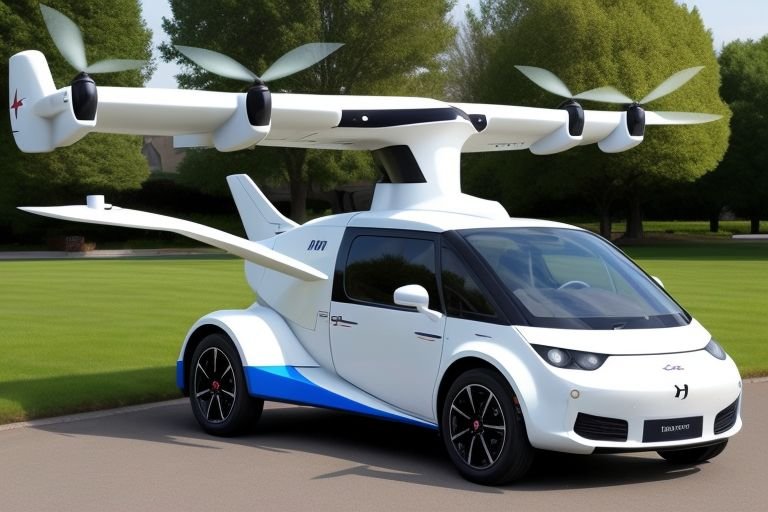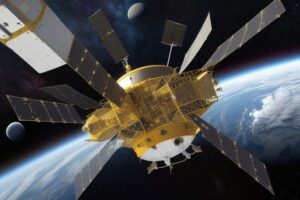In a world constantly seeking the next technological breakthrough, the introduction of the first functional flying car marks a significant leap forward, transforming our traditional concepts of personal and public transport. This long-awaited innovation not only challenges the existing paradigms of road and air travel but also promises to reshape urban landscapes and commuting patterns globally.
The Dawn of Aerial Mobility
The concept of flying cars has captivated the imagination of engineers, entrepreneurs, and dreamers for decades, with its roots traceable back to early 20th-century sci-fi literature and futurist visions. However, it was only recently that technological advancements in materials science, aerospace engineering, and artificial intelligence converged to make this dream a practical reality.
The vehicle, developed by AeroMobile, a pioneer in aerospace technology, successfully completed its maiden voyage last week, soaring above the congested city streets and sprawling urban districts. This prototype, which seamlessly transitions from driving to flying mode in less than three minutes, represents a monumental achievement in integrated transportation systems.
Design and Technology
The flying car features a sleek, lightweight design optimized for both air and road travel. Constructed from advanced carbon-fiber composites, the vehicle is both sturdy and aerodynamically efficient. Its hybrid engine supports both gasoline and electric operation, providing flexibility depending on the travel mode and availability of charging infrastructure.
A key aspect of the design is safety. The car is equipped with state-of-the-art navigation systems and multiple redundancies that ensure stability and reliability in the air. It also includes an emergency parachute deployment system, which can safely land the vehicle and its passengers in the unlikely event of a mechanical failure.
Regulatory Hurdles and Airspace Integration
The introduction of flying cars brings a complex array of regulatory challenges. National aviation authorities and urban planners are already working closely with technology developers to create frameworks that can support this new form of transportation. Key considerations include airspace management, pilot licensing, and urban takeoff and landing zones.
To address these issues, AeroMobile and similar companies are collaborating with regulatory bodies to develop clear guidelines and protocols. The goal is to ensure that flying cars are integrated safely into existing transportation ecosystems without disrupting current aviation routes and practices.
Environmental Impact and Sustainability
One of the most significant concerns regarding flying cars is their environmental impact. Aero Mobile has prioritized sustainability in its designs, aiming to reduce carbon emissions and noise pollution. The vehicle’s hybrid engine is an important step toward greener transportation modes, with plans to shift entirely to electric power as battery technology advances.
Moreover, the use of flying cars could potentially decrease traffic congestion, leading to lower emissions from traditional vehicles stuck in traffic. This shift could contribute significantly to urban air quality improvement and overall environmental health.
Market Potential and Public Reception
The market response to flying cars is cautiously optimistic. With initial models targeting affluent individuals and businesses, the broader public availability is expected to follow as technology becomes more affordable. Market analysts predict a gradual adoption curve, similar to other transformative technologies like electric cars and renewable energy solutions.
Public reception, however, varies widely. While there is excitement about the potential for quicker, more efficient travel, concerns about safety, cost, and environmental impacts remain prevalent. Ongoing education and transparent communication from manufacturers and regulators will be crucial in garnering broader public acceptance.
Looking Ahead: The Future of Transportation
As we look to the future, the integration of flying cars into daily transportation could have profound implications. Urban infrastructure will need to evolve, incorporating vertical takeoff and landing hubs and revising traffic management systems to accommodate aerial vehicles. This evolution will not only affect how we travel but also where we live and work, potentially making remote areas more accessible and altering real estate dynamics.
The launch of the world’s first flying car is not just a novelty; it’s a pivotal moment in the evolution of transportation, promising to redefine how we conceive of mobility. As this technology progresses, it will necessitate careful consideration of regulatory, environmental, and social factors, but the potential benefits—reduced traffic congestion, decreased travel times, and a smaller environmental footprint—suggest a bright future for aerial transportation.























+ There are no comments
Add yours